Yazan H. Al-Badarneh
Performance Analysis of RIS-Assisted Spectrum Sharing Systems
Apr 21, 2024
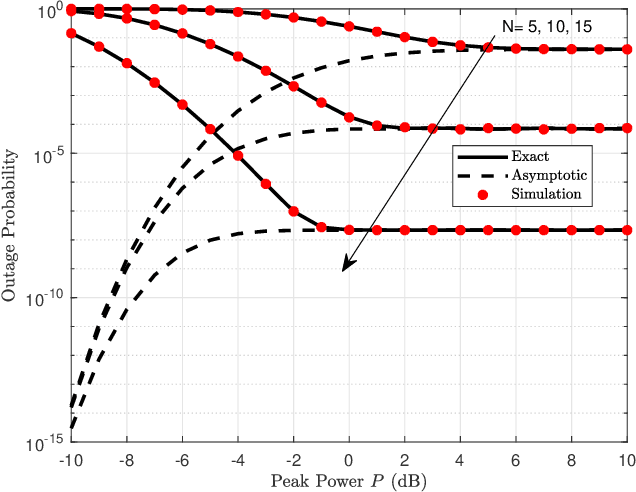
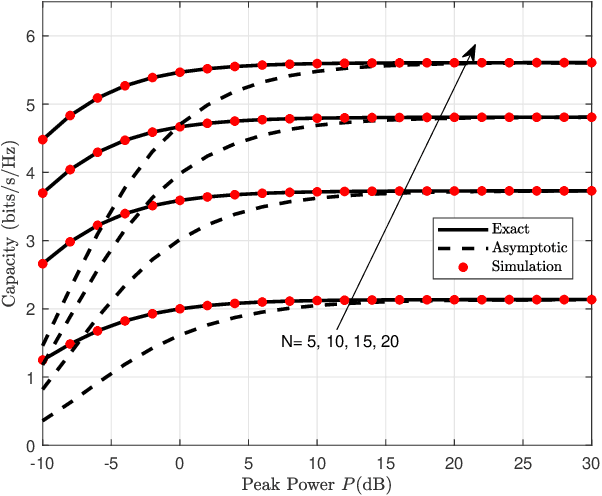
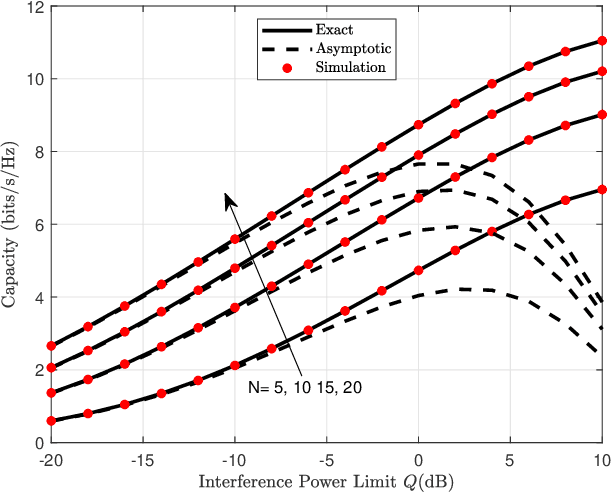
Abstract:We propose a reconfigurable intelligent surface (RIS)-assisted underlay spectrum sharing system, in which a RIS-assisted secondary network shares the spectrum licensed for a primary network. The secondary network consists of a secondary source (SS), an RIS, and a secondary destination (SD), operating in a Rician fading environment. We study the performance of the secondary network while considering a peak power constraint at the SS and an interference power constraint at the primary receiver (PR). Initially, we characterize the statistics of the signal-to-noise ratio (SNR) of the RIS-assisted secondary network by deriving novel analytical expressions for the cumulative distribution function (CDF) and probability density function (PDF) in terms of the incomplete H-function. Building upon the SNR statistics, we analyze the outage probability, ergodic capacity, and average bit error rate, subsequently deriving novel exact expressions for these performance measures. Furthermore, we obtain novel asymptotic expressions for the performance measures of interest when the peak power of the SS is high. Finally, we conduct exhaustive Monte-Carlo simulations to confirm the correctness of our theoretical analysis.
Selection Combining over Log-Logistic Fading Channels with Applications to Underwater Optical Wireless Communications
Jun 05, 2023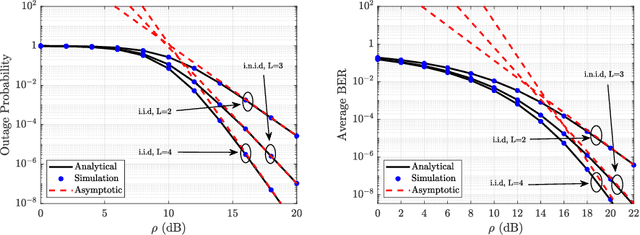
Abstract:We study the performance of a selection combining (SC) receiver operating over independent but non-identically distributed log-logistic ($\mathcal{LL})$ fading channels. We first characterize the statistics of the output instantaneous signal-to-noise ratio (SNR) of the SC receiver. Based on the SNR statistics, we derive exact analytical expressions, in terms of multivariate Fox H-functions, for the outage probability, the average bit error rate, and the ergodic capacity. We also derive exact expressions for such performance measures when all channels are independent and identically distributed, as a special case. Furthermore, we deduce simplified asymptotic expressions for these performance metrics assuming high values of average transmit SNR. To demonstrate the applicability of our theoretical analysis, we study the performance of an SC receiver in underwater optical wireless communication systems. Finally, we confirm the correctness of the derived analytical results using Monte Carlo Simulations.
Max-Min Data Rate Optimization for RIS-aided Uplink Communications with Green Constraints
Jul 30, 2022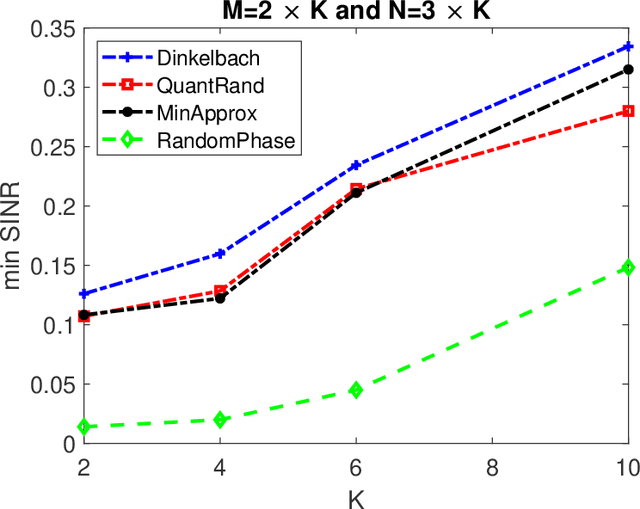
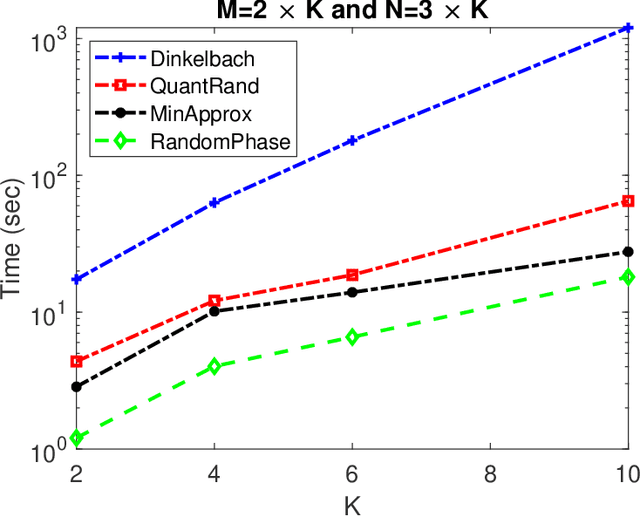
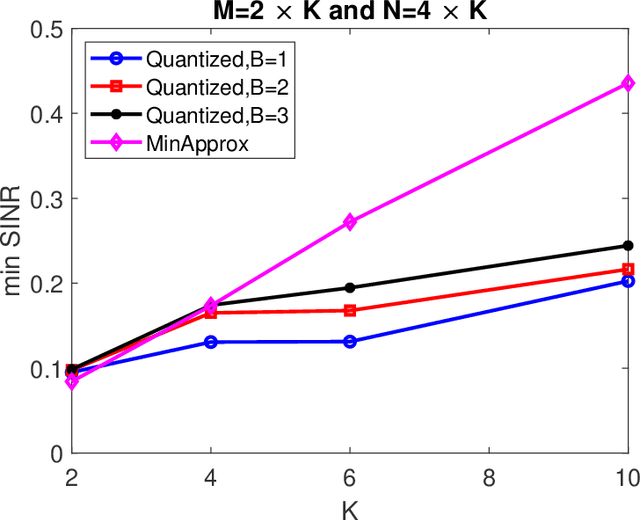
Abstract:Smart radio environments aided by reconfigurable intelligent reflecting surfaces (RIS) have attracted much research attention recently. We propose a joint optimization strategy for beamforming, RIS phases, and power allocation to maximize the minimum SINR of an uplink RIS-aided communication system. The users are subject to constraints on their transmit power. We derive a closed-form expression for the beam forming vectors and a geometric programming-based solution for power allocation. We also propose two solutions for optimizing the phase shifts at the RIS, one based on the matrix lifting method and one using an approximation for the minimum function. We also propose a heuristic algorithm for optimizing quantized phase shift values. The proposed algorithms are of practical interest for systems with constraints on the maximum allowable electromagnetic field exposure. For instance, considering $24$-element RIS, $12$-antenna BS, and $6$ users, numerical results show that the proposed algorithm achieves close to $300 \%$ gain in terms of minimum SINR compared to a scheme with random RIS phases.
 Add to Chrome
Add to Chrome Add to Firefox
Add to Firefox Add to Edge
Add to Edge